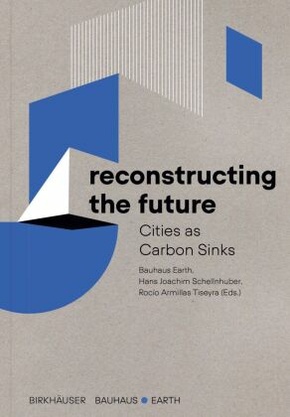
Reconstructing the Future - Cities as Carbon Sinks
| Verlag | Birkhäuser Berlin |
| Auflage | 2023 |
| Seiten | 248 |
| Format | 16,0 x 23,0 x 20,2 cm |
| Großformatiges Paperback. Klappenbroschur | |
| Gewicht | 610 g |
| Artikeltyp | Englisches Buch |
| ISBN-10 | 3035626979 |
| EAN | 9783035626971 |
| Bestell-Nr | 03562697A |
Konferenz von Bauhaus Erde und der Päpstlichen Akademie der Wissenschaften, Juni 2022
Die gebaute Umwelt ist ein entscheidender Faktor in der Klimagleichung. Gebäude und Infrastrukturen sind für etwa 40 Prozent der weltweiten Treibhausgasemissionen direkt verantwortlich.
Glücklicherweise besteht die Möglichkeit, die gebaute Umwelt von einer Kohlenstoff-Quelle zu einer Kohlenstoff-Senke umzubauen, z. B. durch Hochhäuser in Holzbauweise, Methoden der zirkulären Bioökonomie, KI-gestütztes Design, intelligente Recyclingtechnologie, multifunktionale Flächennutzung, integriertes regionales Ressourcenmanagement und gemeindebasierte Stadtentwicklung, um nur einige zu nennen.
Der Band fasst die Beiträge der Konferenz "Reconstructing the Future for People and Planet" in der Päpstlichen Akademie der Wissenschaften, Casina Pio IV, Vatikan vom Juni 2022 zusammen, die von weltweit renommierten Wissenschaftler:innen, Architekt:innen, Raumplaner:innen und politische n Entscheidungsträger:innen präsentiert wurden.
Erste Publikation von Bauhaus Erde Impulse zur Umgestaltung der Anthroposphäre Beiträge von Hans Joachim Schellnhuber, Ursula von der Leyen, Edgar Pieterse, Francesca Bria, Xu Tiantian, Shigeru Ban, Sheela Patel, Ana María Durán Calisto u. v. a.
Bauhaus Earth and Pontifical Academy of Sciences conference, June 2022
The built environment is a critical factor in the climate equation. Approximately 40 percent of global emissions derive from the construction, operation, and demolition of human settlements. The 21st century must be the century of re-entanglement, where quintessential functions (housing, work, culture, recreation, etc.) are reintegrated within urban spaces; where socioeconomic and ecological systems form a mutually supportive network of networks; and where past, present, and future are perceived as interwoven waves in the river of time.
Fortunately, opportunities exist to transform the built environment from a carbon source to a carbon sink through, e.g. timber construction high-rise buildings, circular bioeconomy methods, AI-assisted design, smart recycling technology, multifunctional land use, integrated regional resource management, and community-based urban development, to nam e just a few.
This volume compiles the papers presented by world-renowned scientists, architects, spatial planners, activists, and policy makers at the Reconstructing the Future for People and Planet conference, held at the Vatican in June 2022.
First publication of the Bauhaus Earth think tank Ideas to transform the anthropocene Contributions by Hans Joachim Schellnhuber, Ursula von der Leyen, Edgar Pieterse, Francesca Bria, Xu Tiantian, Shigeru Ban, Sheela Patel, Ana María Durán Calisto, and many others
We look forward to the re-entanglement of our cities with the ingenuity of nature's systems, and to forging closer alliances across Built by Nature, Bauhaus Earth, and all our partners in this endeavor.
Donald Brenninkmeijer, Chair Built by Nature, Chair Laudes Foundation Investment Committee
Leslie Johnston, CEO, Laudes Foundation
James Drinkwater, Head of Built Environment, Laudes Foundation
